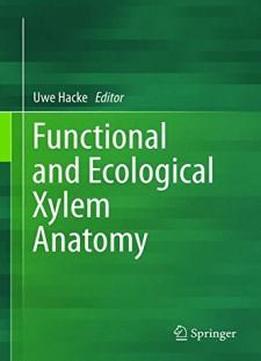
Functional And Ecological Xylem Anatomy
by Uwe Hacke /
2015 / English / PDF
12 MB Download
The book will describe the xylem structure of different plant
groups, and will put the findings in a physiological and ecological
context. For instance, when differences in vessel diameter are
featured, then there will be an explanation why this matters for
water transport efficiency and safety from cavitation. The focus is
on the hydraulic function of xylem, although mechanical support and
storage will also be covered. Featured plant groups include ferns
(which only have primary xylem), conifers (tracheid-based xylem),
lianas (extremely wide and long vessels), drought-adapted shrubs as
well as the model systems poplar and grapevine. The book chapters
will draw on the expertise and cutting edge research of a
diversified group of internationally known researchers working
in different anatomical and physiological sub-disciplines. Over the
last two decades, much progress has been made in understanding how
xylem structure relates to plant function. Implications for other
timely topics such as drought-induced forest dieback or the
regulation of plant biomass production will be discussed.
The book will describe the xylem structure of different plant
groups, and will put the findings in a physiological and ecological
context. For instance, when differences in vessel diameter are
featured, then there will be an explanation why this matters for
water transport efficiency and safety from cavitation. The focus is
on the hydraulic function of xylem, although mechanical support and
storage will also be covered. Featured plant groups include ferns
(which only have primary xylem), conifers (tracheid-based xylem),
lianas (extremely wide and long vessels), drought-adapted shrubs as
well as the model systems poplar and grapevine. The book chapters
will draw on the expertise and cutting edge research of a
diversified group of internationally known researchers working
in different anatomical and physiological sub-disciplines. Over the
last two decades, much progress has been made in understanding how
xylem structure relates to plant function. Implications for other
timely topics such as drought-induced forest dieback or the
regulation of plant biomass production will be discussed.











